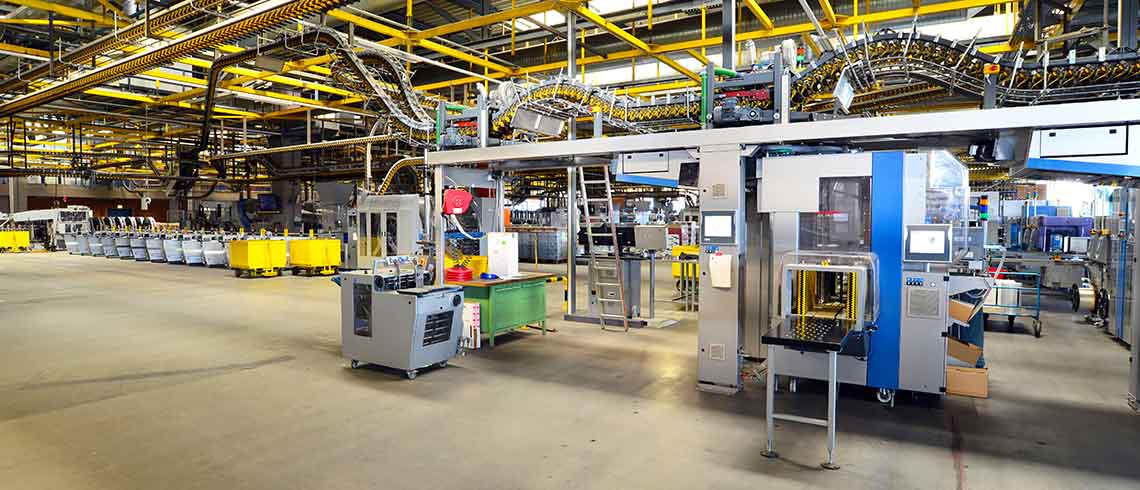What is light industrial work? Light industrial work, often called light industry, constitutes a crucial segment of the job market, encompassing a range of tasks vital to various industries. Light industrial work requires physical labor and specialized tools and equipment. This category of work is integral in supporting the production and distribution of goods, making it a cornerstone of modern industrial economies.
What is Light Industrial Work and its Characteristics
If you want to know what is light industrial work, you should know its characteristics. A defining characteristic of light industrial work is its physical demands on individuals. This can involve tasks such as lifting, carrying, and operating machinery. Additionally, employees in light industrial roles often work in dynamic environments where adaptability and quick thinking are essential. Specialized equipment and tools are also a hallmark, ranging from warehouse forklifts to manufacturing plant precision instruments.
Furthermore, the work environment in light industrial settings can vary greatly. Some may work in climate-controlled facilities, while others may be exposed to outdoor elements. Understanding and adapting to these conditions is crucial for success in these roles.
Roles and Responsibilities
A diverse range of positions exist within the realm of light industrial work. These roles encompass everything from assembly line workers to machine operators and logistics coordinators. Entry-level positions may require less experience but often involve extensive on-the-job training in light industrial work. Conversely, experienced individuals may take on more specialized roles or supervisory positions, where their expertise is to ensure the industrial process is operated smoothly.
Specialized roles may include CNC (Computer Numerical Control) machine operators, who work with precision machinery, or quality control inspectors, responsible for ensuring products meet strict quality standards. These positions often require additional training and expertise.
Industries that Utilize Light Industrial Work
The application of light industrial work is widespread, with industries relying on it for various functions. In manufacturing, workers are involved in producing goods, from assembling electronics to fabricating components. Warehousing and logistics also heavily depend on light industrial roles, with employees managing inventory, organizing shipments, and operating machinery. Furthermore, construction sites employ individuals for tasks ranging from carpentry to equipment operation.
The e-commerce boom has significantly increased the demand for light industrial workers in warehousing and logistics in recent years. As the e-commerce and online shopping trend grows, the need for efficient distribution centers and skilled workers to manage them is expected to rise.
Advantages of Light Industrial Work
One of the important career advantages of light industrial work is the stability it offers. As industries consistently require skilled individuals to manage their operations, job security tends to be high in light industrial work. Moreover, this sector often presents numerous opportunities for career advancement. With experience, individuals can transition into supervisory roles within light industrial work.
Additionally, many light industrial positions offer competitive wages and benefits packages. According to the U.S. Bureau of Labor Statistics, the median annual wage for production workers in manufacturing was $36,260 in May 2020, higher than the median wage for all occupations.
Challenges and Considerations
Despite its merits, light industrial work does present challenges. Safety concerns are paramount, given the physical nature of the tasks involved. Employers prioritize safety protocols and provide training to mitigate risks. Personal protective equipment (PPE) such as gloves, helmets, and safety goggles are standard in many light industrial settings.
Moreover, the potential for automation is a consideration. As technology advances, some tasks may become automated, emphasizing the importance of staying adaptable and acquiring new skills in light industrial work. This underscores the importance of ongoing professional development and staying abreast of industry trends in light industrial work.
Qualifications and Education
Formal education requirements for light industrial work can vary depending on the specific role and industry. Some entry-level positions may only necessitate a high school diploma or equivalent, with extensive on-the-job training provided. However, specialized roles may require certification programs or vocational training in light industrial work. These programs equip individuals with the technical skills necessary to excel in their chosen field.
For example, forklift operators may need to obtain a certification from a recognized training program. Similarly, machinists may benefit from completing a formal apprenticeship to gain the necessary skills and expertise in light industrial work.
Tips for Success in Light Industrial Work
To thrive in light industrial work, individuals can take proactive steps. Building physical endurance through regular exercise and proper lifting techniques is crucial for long-term success in light industrial work. Moreover, developing technical proficiency in the operation of machinery and equipment is invaluable. Effective communication and teamwork skills are also highly prized, as they contribute to a productive and harmonious work environment in light industrial work.
In addition, staying up-to-date with industry-specific certifications and training programs can enhance one’s qualifications and open doors to new opportunities within the field of light industrial work.
Future Trends in Light Industrial Work
The landscape of light industrial work is continually evolving. Technological advancements are driving increased automation and the integration of smart technologies in industrial processes. Additionally, sustainability and environmental considerations are becoming more prominent, influencing the development of eco-friendly practices within industries that rely on light industrial work.
For instance, the adoption of renewable energy sources and the implementation of energy-efficient practices in manufacturing are trends that are expected to shape the future of light industrial work.
Conclusion
In conclusion, what is light industrial work? Light industrial work forms the backbone of many industries, encompassing a wide range of roles and responsibilities. Understanding the physical demands, potential for career growth, and evolving trends in this field is crucial for individuals considering or pursuing careers in light industrial work. With the right skills and knowledge, individuals can thrive in this dynamic and essential sector of the workforce.
By staying informed about industry developments and continuously honing their skills, professionals in light industrial work can excel in their current roles and contribute to the advancement and sustainability of the industries they serve in light industrial work.
If you are looking to hire candidates for any light industrial work roles, get in touch with us at ROI Staffing.
Read more: Talent Acquisition in 2023: Recruitment Process Outsourcing



